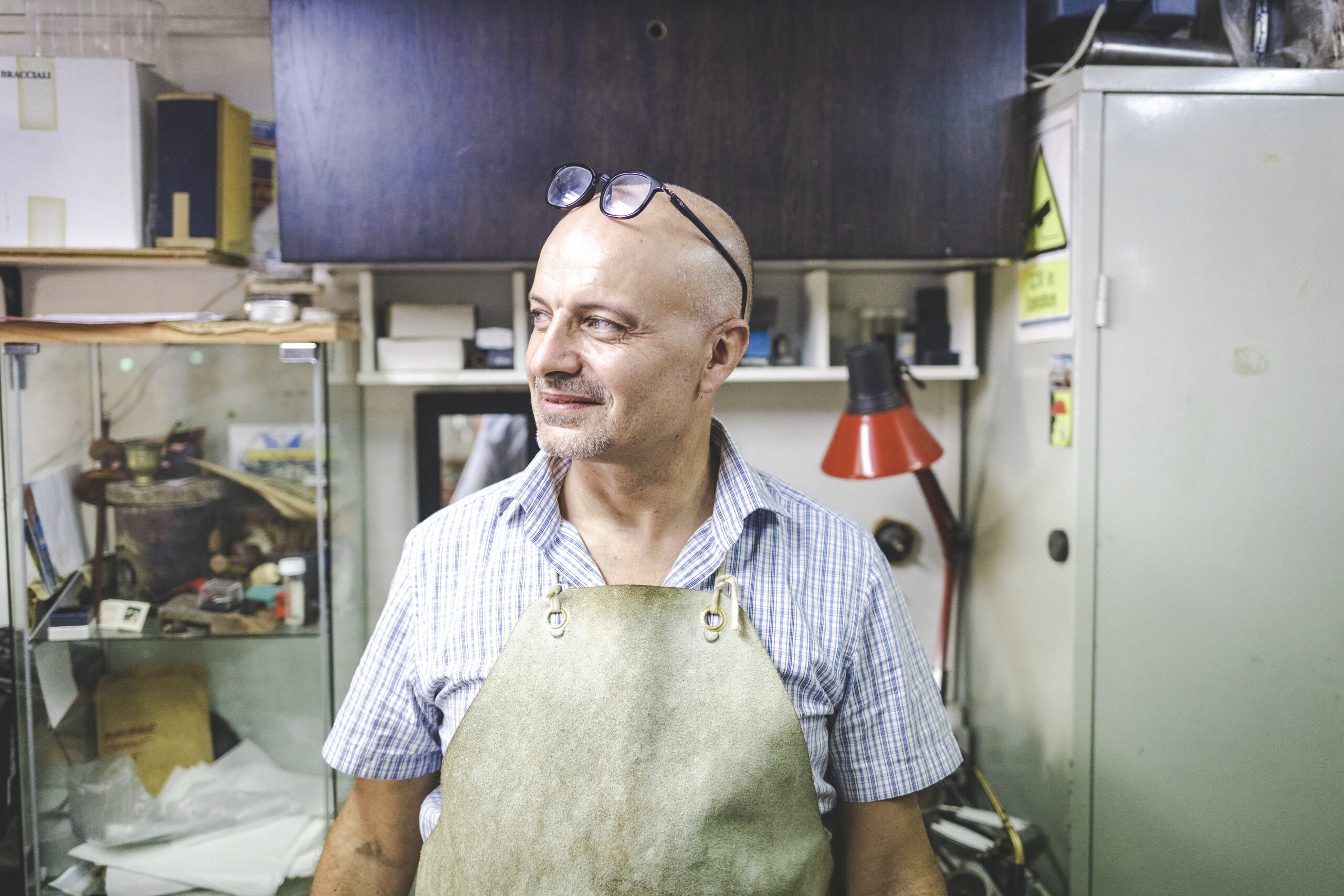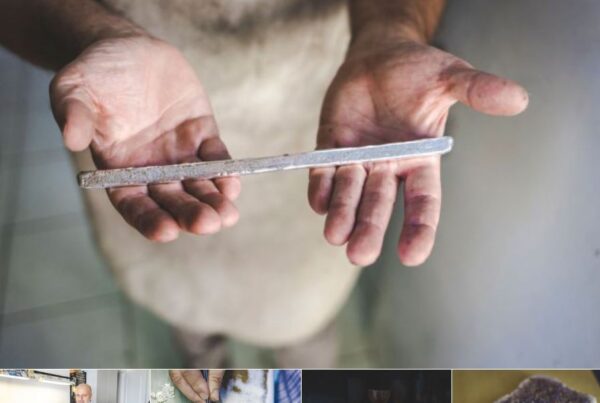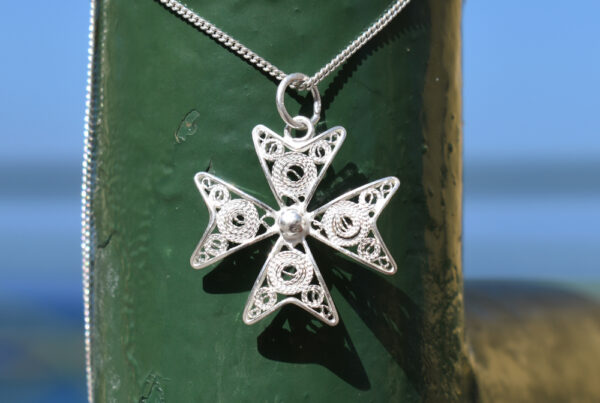Q&A with Gaetano Saliba, director and master artisan of Saliba’s Gold & Silversmith.

When your passion for filigree was discovered ?
Jewelry making runs deep in my family. My grandfather was a full-time jeweler, and my father followed in his footsteps—not only as a jeweler but also as a SA technician and hallmarker at the Office of the Consul for Goldsmiths and Silversmiths. He passed his knowledge on to me, which has always been a great source of encouragement.
At 14, I began working full-time as a silversmith at Viktor Azzopardi Ltd. For eight years, I worked as a jeweler, though not specifically in filigree. My introduction to filigree happened quite by chance one day when I found unfinished frames waiting to be filled with small twisted silver spirals to create the intricate Maltese cross design. A colleague had started making them but lost motivation to finish, so I took it upon myself to complete the work.
That moment was my first true encounter with filigree — the moment I truly connected with this precious and delicate craft.
When your business stated ?
In 1989, I took a bold step and started my own business. My beginnings were modest—a garage transformed into a fully equipped workshop, complete with machinery for wire production, a dedicated filigree workspace, and a chemical setup for cleaning and electroplating.
To me, being a filigree maker means much more than just twisting wire and soldering it onto a frame. The process in my workshop is far more detailed and hands-on.
It all begins with raw materials. Pure silver grains are melted and poured into molds to form ingots, which are then drawn into the fine wires used to craft filigree pieces. Every jewelry item embarks on a long journey, finishing with careful cleaning, polishing, and electroplating—all done right here in my workshop.
As a craftsperson, not just an artist, I aim to create more than one unique piece. To succeed, I mastered reproducing items in quantity, ensuring each is uniform and of the highest quality. Speed is also key to keeping the business profitable.
This journey inspired me to innovate—designing and building specialized tools and machinery for filigree making. I also expanded my skills beyond silversmithing, learning the chemistry behind cleaning and electroplating jewelry.
Did you ever wanted to give up of filigree ?
Through my more than 30 years in business, I have faced many difficulties and hard times, but giving up was never an option. I viewed every challenge as an opportunity to grow and succeed. Today, I am proud to say that I have journeyed “through hardships to the stars.”
Is there still demand for filigree on market ?
Yes, the demand is still strong. While traditional designs are less popular than in the past, the good news is that we have modernized our products. We constantly follow new trends and fashion, which inspire our creations. Today, alongside traditional Maltese crosses, butterflies, and flowers, we produce geometric shapes, abstract designs, symbolic motifs, animals — striving to offer something for everyone.
From where do you source materials for filigree making?
As mentioned earlier, I make the filigree pieces in my own workshop. I import only pure silver from abroad. Additionally, I supply many artisans, craftsmen, and students—both locally and internationally—with materials. I am able to produce a variety of wires and plates for jewelry production.
How do you sell your items ?
In the past, we supplied many shops across the island. However, over time, things changed. Shops began looking for more profitable options and started importing filigree from abroad—mostly from the Far East—then selling it here while claiming it was genuine Maltese filigree. When we realized this was happening, we decided to stop supplying shops and instead sell directly to our customers. We wanted to show how filigree is truly made and share the tools and techniques behind this delicate craft. Our goal was to offer something authentic—something that is becoming rare today.
The solution that worked best for us is selling all our items in branded boxes, each accompanied by a certificate guaranteeing that every piece is handmade in Malta from sterling silver 925. Each certificate is personally signed and dated by me at the time of purchase.
In addition to participating in local and international markets and fairs, we sell directly to customers at various hotels on a weekly basis. Our products are also available online through our website and social media platforms.
Do you teach your craft ?
In addition to training my employees, I also teach students who come for internships, as well as anyone interested in learning more about filigree. We offer five different courses designed to suit various skill levels and learning goals.
Our mission is to bring Maltese tradition closer to people. We aim to share our knowledge and experience, inspiring others to keep this beautiful craft alive.
Teaching isn’t limited to our workshop—we’re also happy to demonstrate filigree making at local markets, through social media, and on our website.
Beyond filigree, we offer instruction in silversmithing, marketing, packaging, and accounting—everything needed to start and run a successful business.
It brings me great joy to see someone truly passionate about learning every aspect of filigree. It gives me hope that the next generation will continue crafting these intricate pieces long after my time.
What are your plans for future ?
Malta is currently facing a serious challenge with filigree. Much of the filigree on the market is now imported from the Far East. Many local filigree makers have stopped producing because they cannot find a market for their products. Unfortunately, some have also started importing and mixing foreign filigree with locally made pieces.
Despite these difficulties, we have chosen to keep going and fight for something valuable—something more than just jewelry; it is a vital part of our heritage.
Our mission is to bring Maltese tradition closer to people. We want to share our achievements and encourage others to help keep this craft alive. For now, most of our clients are tourists, but we are doing our best to show locals that Maltese filigree is still fashionable. We should all be proud of it.
Sadly, filigree is now listed as an endangered craft by researchers at the Malta Crafts Foundation. If we don’t act now, future generations may never know what filigree is.




